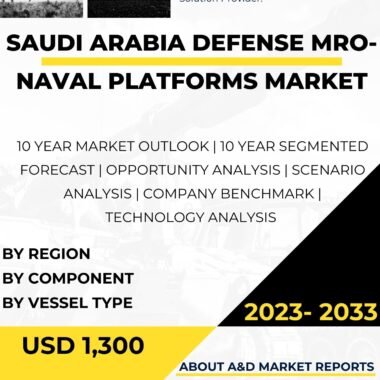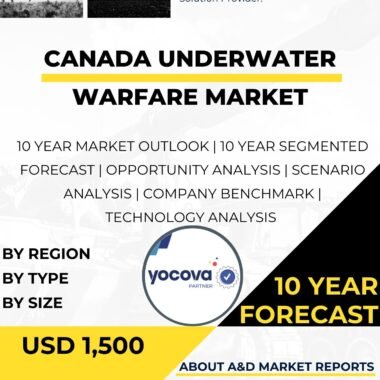Description
Japan has emerged as a significant player in the global combat submersible vehicles (CSV) market, driven by its commitment to maritime security, technological prowess, and a strategic focus on defense modernization. Combat submersible vehicles, often referred to as midget submarines, are underwater vessels designed for a range of military operations, including reconnaissance, surveillance, and covert missions. Japan’s active involvement in this market underscores its dedication to enhancing its naval capabilities and safeguarding its maritime interests.
One of the primary drivers behind Japan’s strong presence in the global CSV market is its geographical location and the strategic importance of its maritime domain. Situated in the Asia-Pacific region, Japan faces a complex and dynamic security environment with a multitude of maritime challenges. These challenges include territorial disputes, regional tensions, and the need to protect vital sea lanes for trade and energy resources. CSVs offer Japan a valuable tool for enhancing its maritime situational awareness and ensuring a swift and effective response to potential threats.
Japan’s commitment to technological innovation and research and development has positioned it as a leader in the CSV market. The nation has invested significantly in designing and manufacturing advanced CSVs equipped with cutting-edge technology, stealth features, and advanced sensors. These vessels are capable of operating in challenging underwater environments, providing a strategic advantage in both defensive and offensive naval operations.
Furthermore, Japan actively participates in international defense collaborations and partnerships, contributing to its CSV capabilities. Collaborative ventures with global defense companies have facilitated technology transfer and knowledge sharing, allowing Japan to integrate cutting-edge CSV technology into its naval strategies. These collaborations also enhance interoperability with key allies and strengthen regional security.
Japan’s expertise in CSV technology extends beyond military applications. The nation recognizes the potential for CSVs in civilian sectors, such as marine research, underwater exploration, and disaster response. This dual-use approach enhances Japan’s technological proficiency and provides opportunities for collaboration between the defense and civilian industries.
In conclusion, Japan’s significant role in the global combat submersible vehicles market reflects its commitment to maritime security, technological innovation, and defense modernization. As the security landscape in the Asia-Pacific region continues to evolve, Japan’s expertise in CSV technology will play a pivotal role in enhancing its naval capabilities, safeguarding its maritime interests, and contributing to regional stability and security.
Table of content
Table Of Contents
1 Market Introduction
1.1 Market Introduction
1.2 Market Definition
1.3 Market Segmentation
1.4 10 Year Market Outlook
2 Market Technologies
3 Global Market Forecast
3.1 Global Market Forecast
3.2 By Type
3.3 By Propulsion
4 APAC Market Trends & Forecast
4.1 Drivers, Restraints And Challenges
4.2 PEST
4.3 Market Forecast
4.3.1 Market Forecast By Type
4.3.2 Market Forecast By Propulsion
4.4 Scenario Analysis
4.5 Key Companies& Profiling
5 Japan Analysis
5.1 Current Levels Of Technology Maturation In This Market
5.2 Market Forecast
5.2.1 Market Forecast By Type
5.2.2 Market Forecast By Propulsion
5.3 Scenario Analysis
5.4 Country Defense Budget (Historical and 10- year forecast)
5.5 Defense Budget Category Spending- 10- year forecast
5.6 Procurement Analysis
5.7 EXIM Data
5.8 Patents
6 Opportunity Matrix
6.1 By Type
6.2 By Propulsion
7 Scenario Analysis
7.1 Scenario 1
7.1.1 By Type (Scenario-1)
7.1.2 By Propulsion(Scenario-1)
7.2 Scenario 2
7.2.1 By Type (Scenario-2)
7.2.2 By Propulsion(Scenario-2)
8 Company Benchmark
9 Strategic Conclusions
10 About Aviation And Defense Market Reports
Segments
By Type
By Propulsion
List of Tables
Table1: Global Market Forecast, Combat Submersible Vehicles Market
Table2: APAC Market Forecast, Combat Submersible Vehicles Market
Table3: APAC Market Forecast, By Type
Table4: APAC Market Forecast, By Propulsion
Table5: APAC, Scenario Analysis
Table6: Japan Market Forecast, Combat Submersible Vehicles Market
Table7: Japan Market Forecast, By Type
Table8: Japan Market Forecast, By Propulsion
Table9: Japan, Scenario Analysis
Table 10: Japan Defense Budget 10 Year Forecast
Table 11: Japan, Defense Budget Category Spending- 10- year forecast
Table 12: Japan, Procurement Analysis
Table 13: Japan, EXIM Data Analysis
Table 14: Japan, Opportunity Analysis, By Type
Table 15: Japan, Opportunity Analysis, By Propulsion
Table 16: Japan, Scenario Analysis, By Type
Table 17: Japan, Scenario Analysis, By Propulsion
Figure 1: Market Segmentation, Japan Combat Submersible Vehicles Market
Figure 2: Key Technology Analysis, Combat Submersible Vehicles Market
Figure 3: Global Market Forecast, Combat Submersible Vehicles Market
Figure 4: APAC, Market Forecast, Combat Submersible Vehicles Market
Figure 5: APAC, Market Forecast, By Type
Figure 6: APAC, Market Forecast, By Propulsion
Figure 7: APAC, Scenario Analysis
Figure 8: Japan, Market Forecast, Combat Submersible Vehicles Market
Figure 9: Japan, Market Forecast, By Type
Figure 10: Japan, Market Forecast, By Propulsion
Figure 11: Japan, Scenario Analysis
Figure 12: Japan, Defense Budget 10 Year Forecast
Figure 13: Japan, Defense Budget Category Spending- 10- year forecast
Figure 14: Japan, Procurement Analysis
Figure 15: Japan, EXIM Data Analysis
Figure 16: Japan, Opportunity Analysis, By Type
Figure 17: Japan, Opportunity Analysis, By Propulsion
Figure 18: Japan, Scenario Analysis, By Type
Figure 19: Japan, Scenario Analysis, By Propulsion
Figure 20: Company Benchmark




